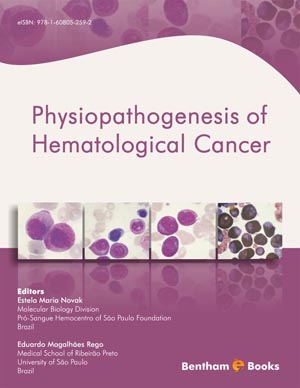Abstract
Multiple myeloma (MM) is a neoplastic plasma cells (PC) disease that has a heterogeneous clinical course and outcome. MM is usually associated, particularly in the advanced forms, with lytic bone lesions, anemia, renal impairment and increased bone marrow angiogenesis. Several factors like activating factors of osteoclast, pro-angiogenic factors, cytokines, growth factors, adhesion molecules and proteinases are involved in these manifestations. Although several aspects of the MM pathogenesis remain uncertain, significant progress occurred in the last decade. This chapter focuses on the current knowledge of the molecular pathogenesis of the disease as well as the pathogenesis of angiogenesis, bone involvement, anemia and renal impairment, which are frequent in MM patients.
Keywords: Stages of MM, Hyperdiploid (HD), non-hyperdiploid (NHD), VDJ Recombination, Immunoglobulin Heavy Chain (IgH), Plasma-Cell Leukemia (PCL), Angiogenesis, Bone Disease, Bone Marrow Stromal Cells (BMSC), Osteoprotegerin, RANKL Inhibitor, Anemia in Multiple Myeloma , Renal Failure, Physiopathogenesis of renal disease in multiple myeloma.






















